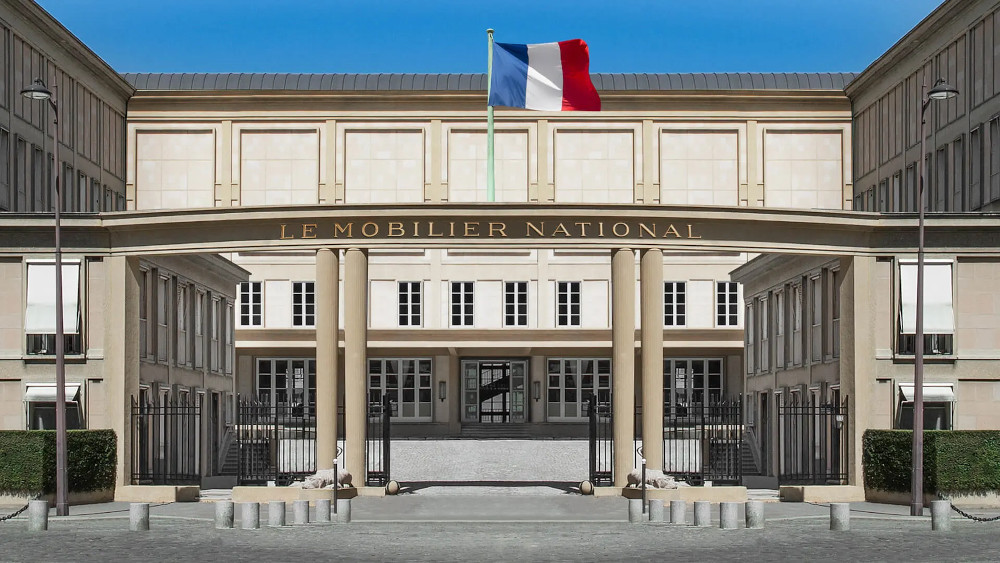About Mobilier National
 Le Mobilier national : garde meuble en or | Mobilier célèbre | Wikimeubles
Le Mobilier national : garde meuble en or | Mobilier célèbre | WikimeublesThe Mobilier national of France has been in existence, under different names, since 1604, when it was formed by King Henry IV to manage the furniture, tapestries, and other objects adorning France’s royal residences. It now holds a vast collection of furnishings dating across centuries and used to decorate the official buildings of France around the world. The Mobilier national also administers historic workshops that produce tapestries, carpets, lace, and furniture, working with leading artists to create contemporary designs.
Tapestry has long been an important part of the cultural patrimony of France, but in the early decades of the twentieth century the industry faltered due to the depressed global economy and a decline in consumer demand. In the late 1930s, the historic Gobelins and Beauvais tapestry manufactories were brought under the administration of the Mobilier national, providing essential support to continue their operations. These factories collaborate with artists to produce contemporary tapestries. In addition to fostering these important collaborations, the Mobilier national supports training programs and jobs within the weaving workshops, making it possible for the ancient craft of tapestry to remain alive and for the skills to be passed down from one generation to the next.
